
iSyncBrain
Sample Reports
Advanced Summary Report
This report uses 3D EEG analysis to assess brain function across all major lobes. It compares brainwave patterns to normative data, highlighting areas of overactivity and underactivity. Each region’s cognitive, emotional, and sensory roles are explained alongside potential symptoms. The result is a detailed, easy to understand, and personalized map of brain performance to guide care and track progress.
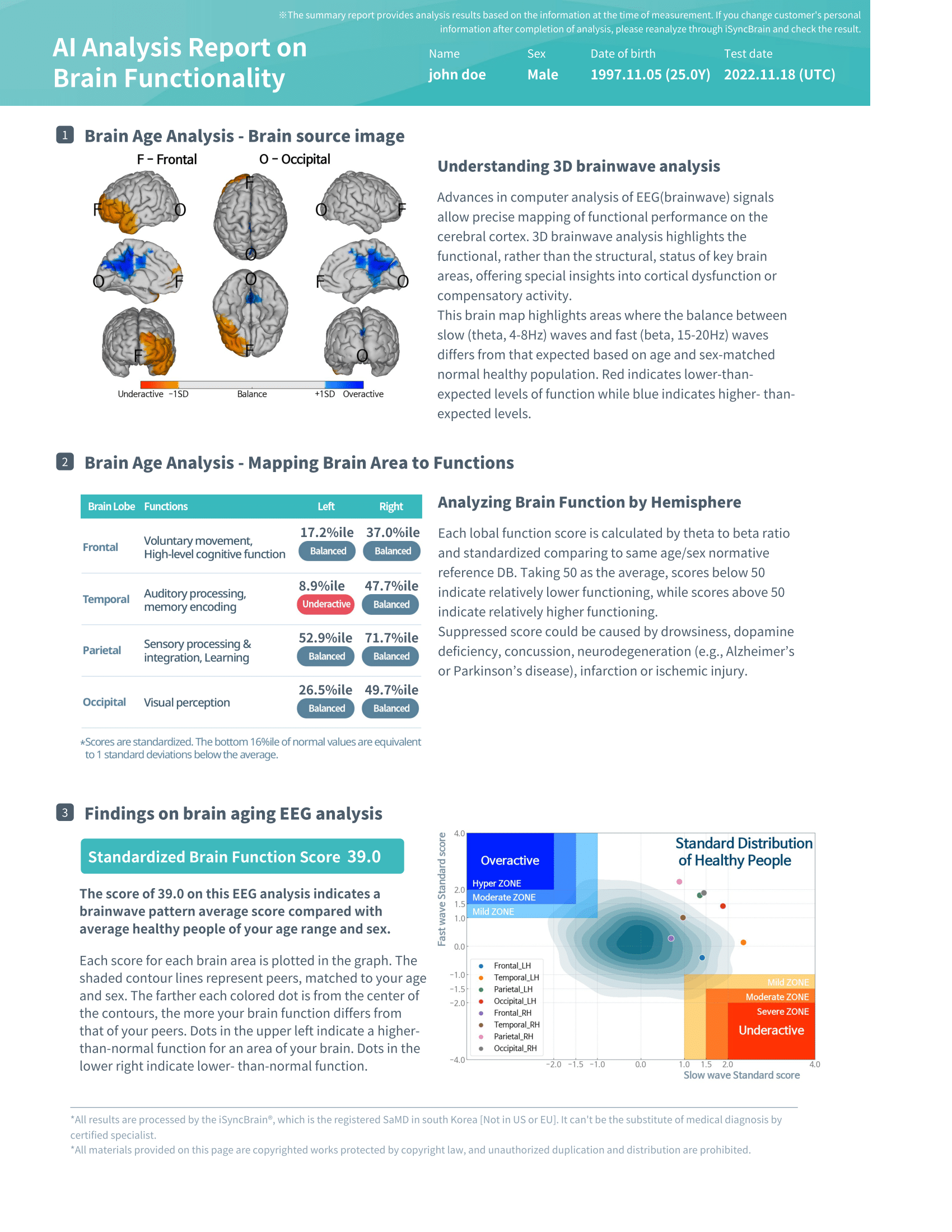
Introduces 3D EEG analysis, hemisphere scores, and full-brain comparison to norms. Highlights overall brain function and major deviations.
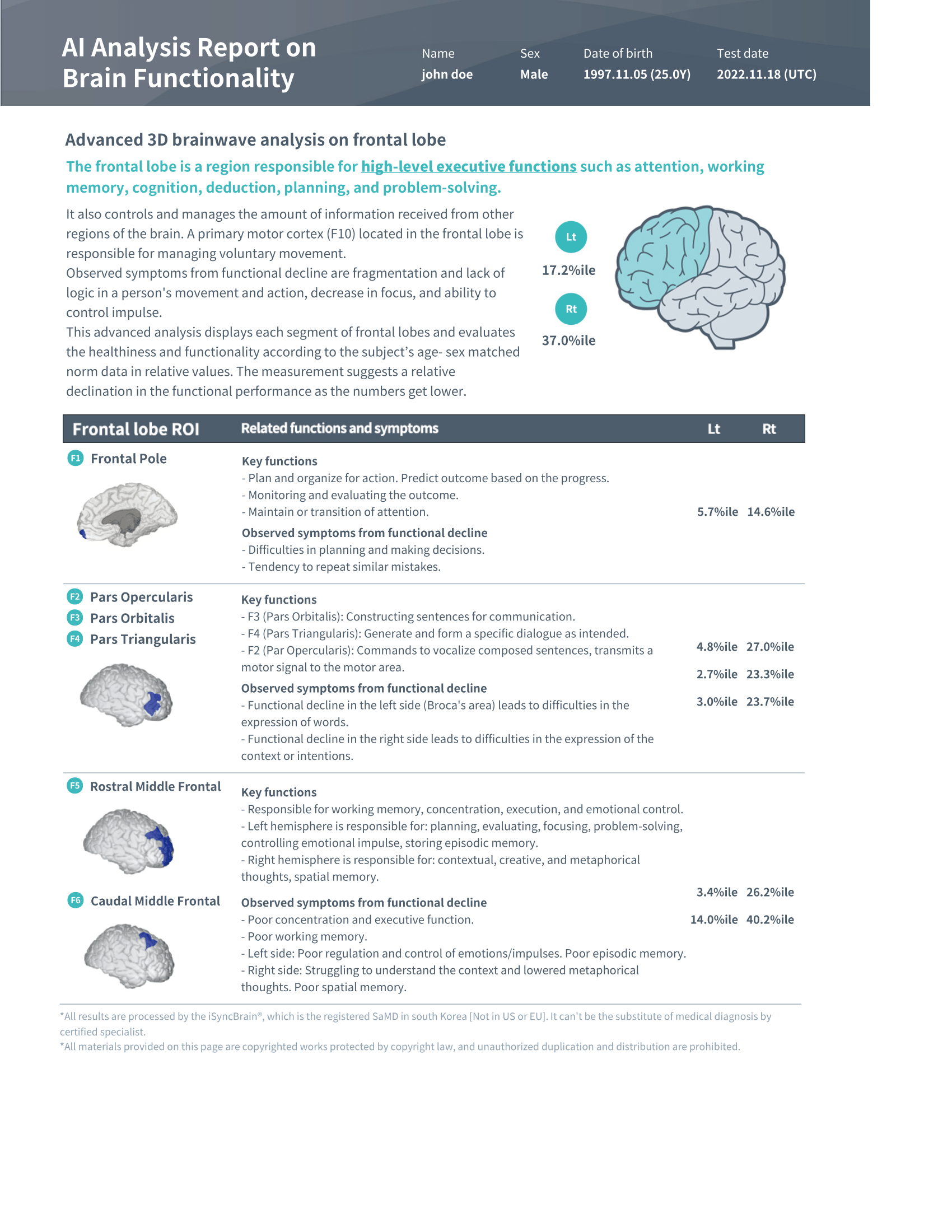
Analyzes planning, attention, impulse control, and language production. Low scores may indicate cognitive or emotional regulation issues.
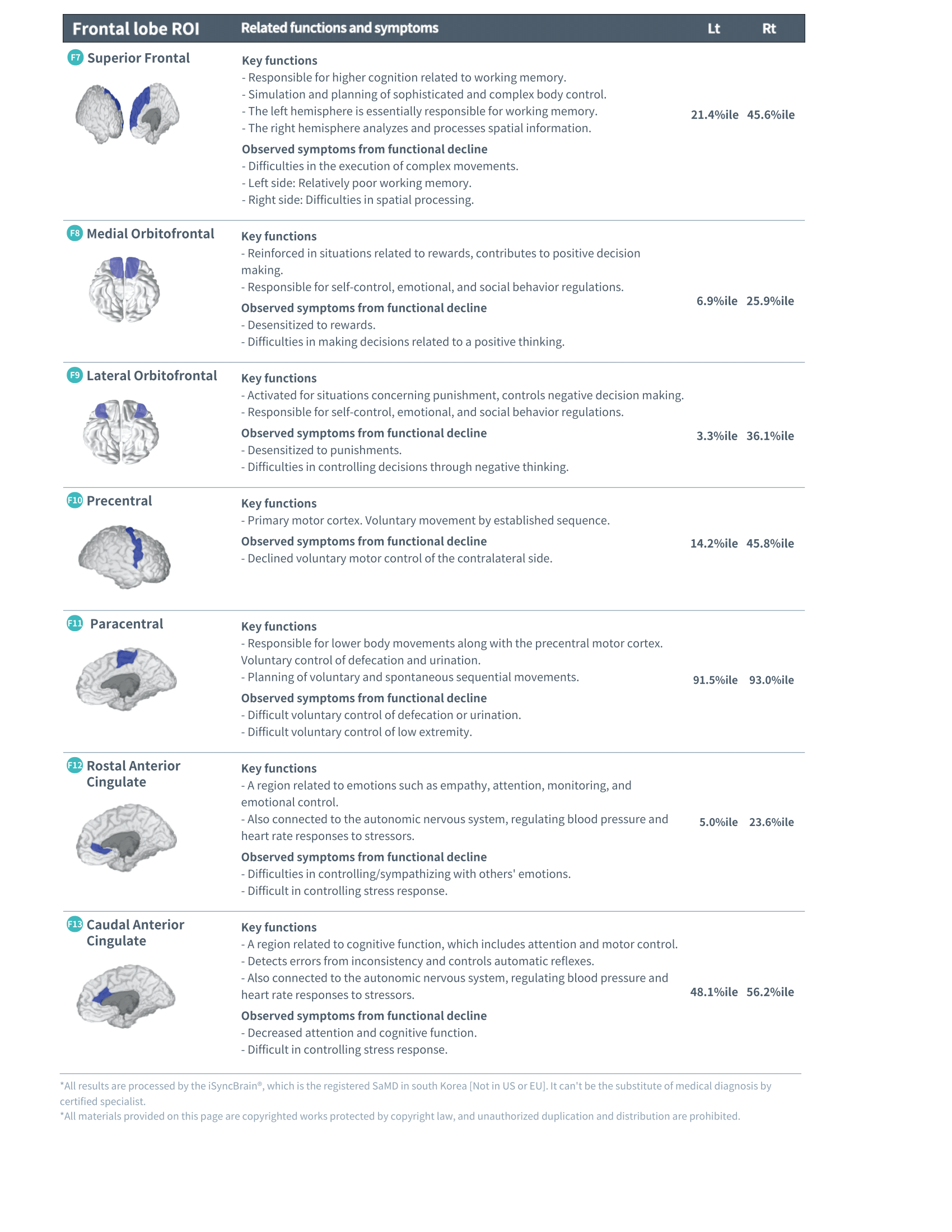
Covers memory, motor control, and emotional processing. Highlights dysfunction in reward/punishment response and social behavior regulation.

Focuses on auditory processing, language comprehension, memory, and emotional recognition. Low scores may impact verbal and social function.
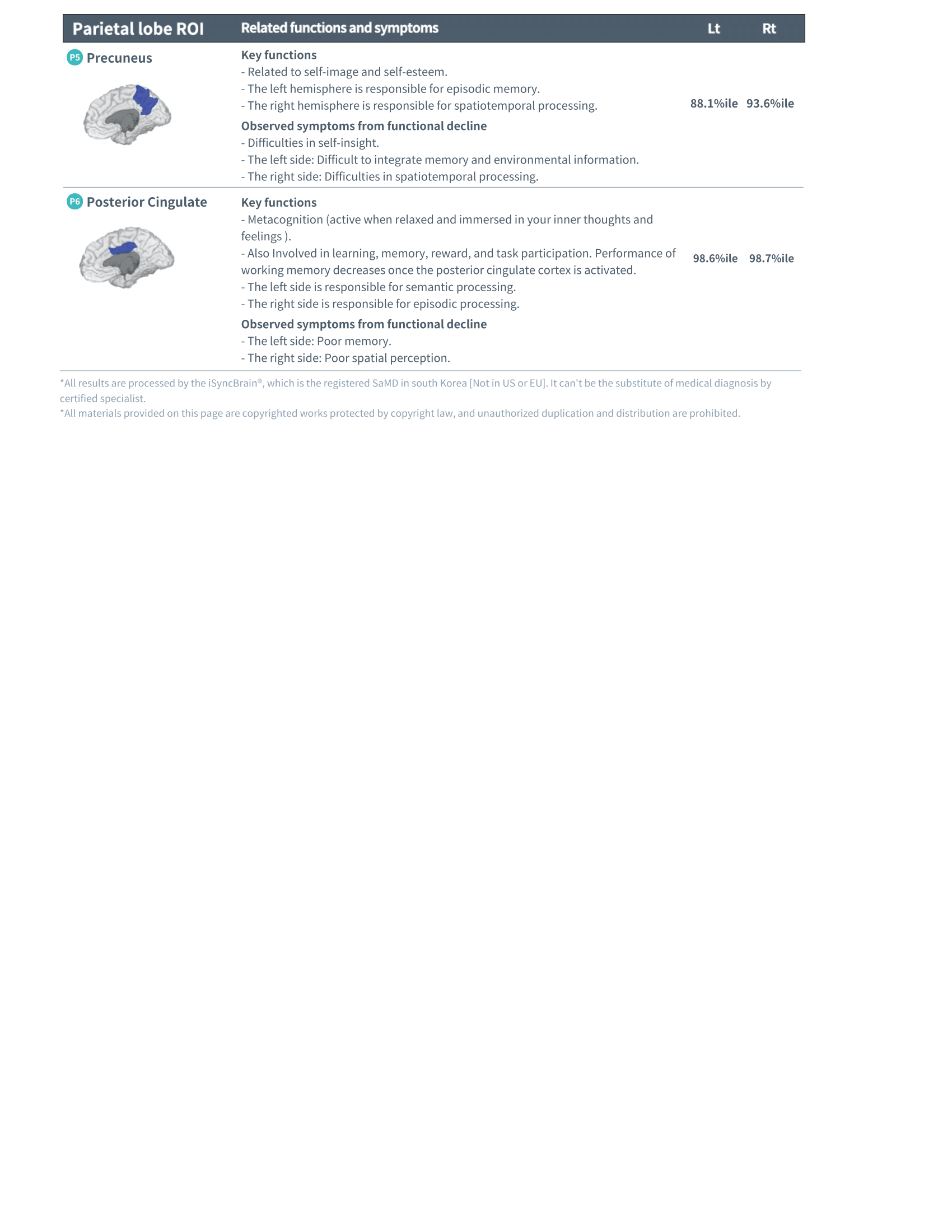
Analyzes auditory cortex, face/emotion recognition, spatial and episodic memory, and interoception. Dysfunction may relate to social or sensory issues.

Evaluates sensory-motor integration, language, empathy, and spatial awareness. Declines here may affect body perception and emotional understanding.

Highlights self-image, memory integration, and inner thought processing. High scores indicate preserved reflection and metacognition.
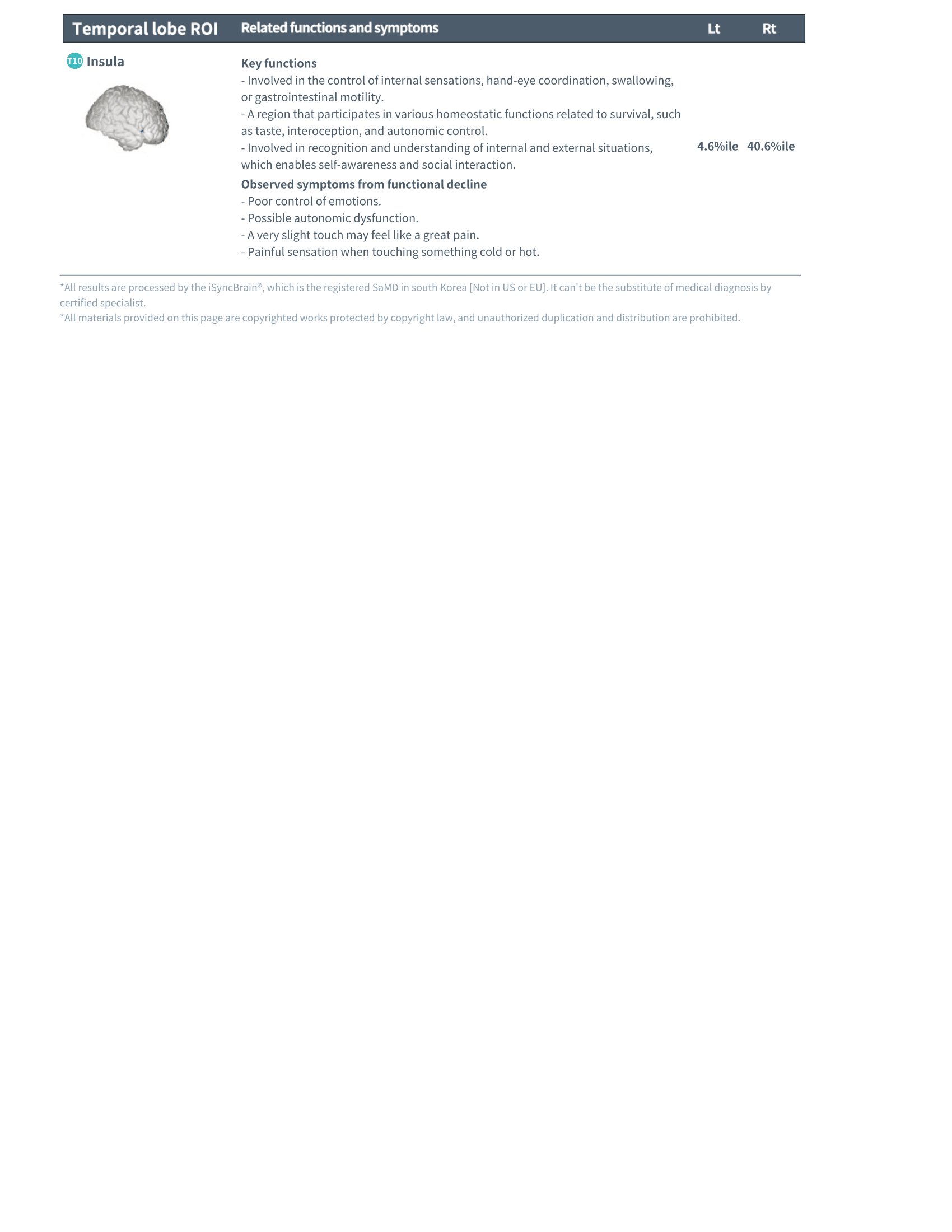
Examines self-awareness, metacognition, and memory integration. Strong performance here supports internal reflection and cognitive control.
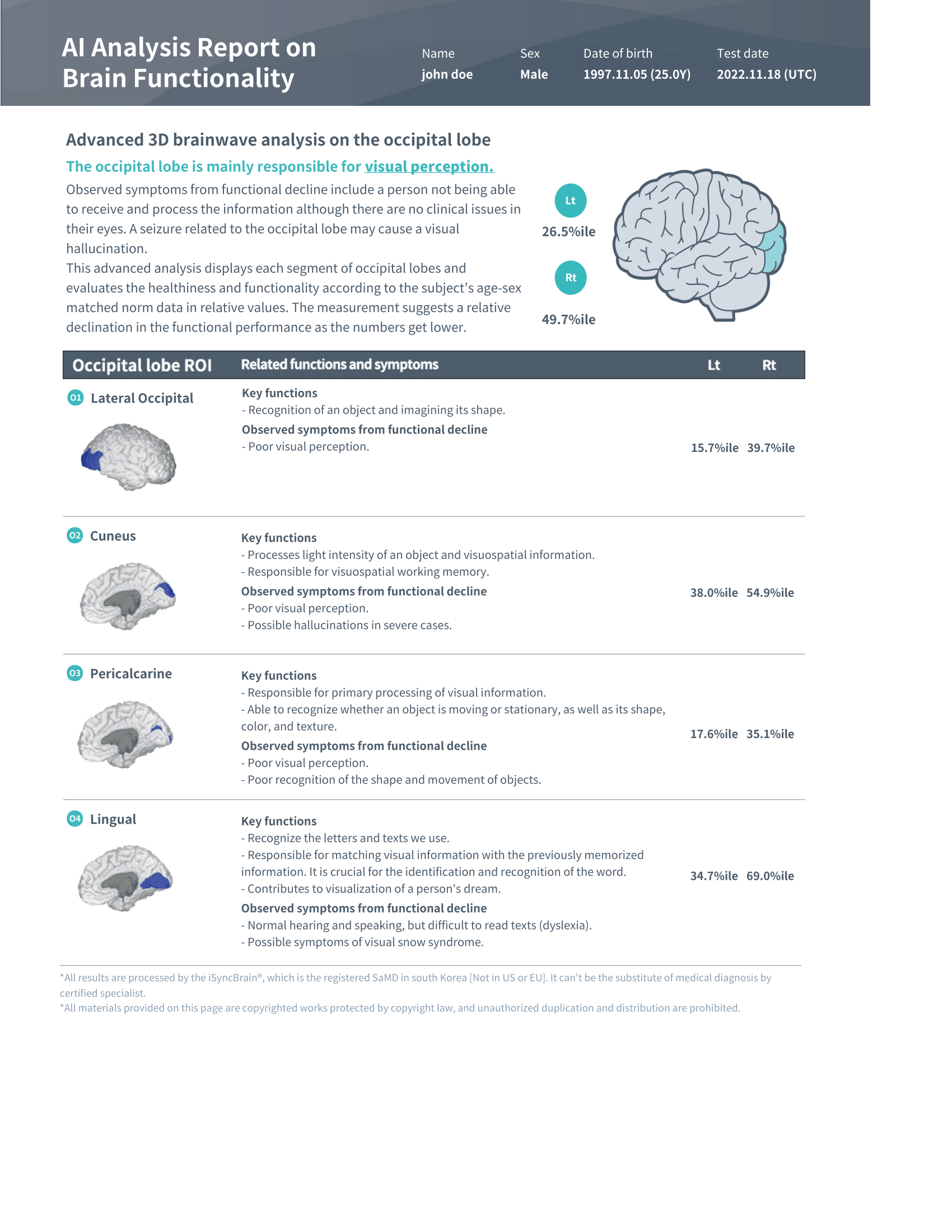
Assesses visual recognition, perception, and reading. Low scores may cause difficulty with shapes, letters, or visual clarity.
Normative qEEG Report
This comprehensive EEG report compares brainwave data to a large, age- and sex-matched normative database. It highlights brain activity patterns, power ratios, and neural connectivity to uncover insights into cognitive function, emotional regulation, and neurological risk. Clinicians use this data to guide diagnosis, track progress, and personalize treatment.
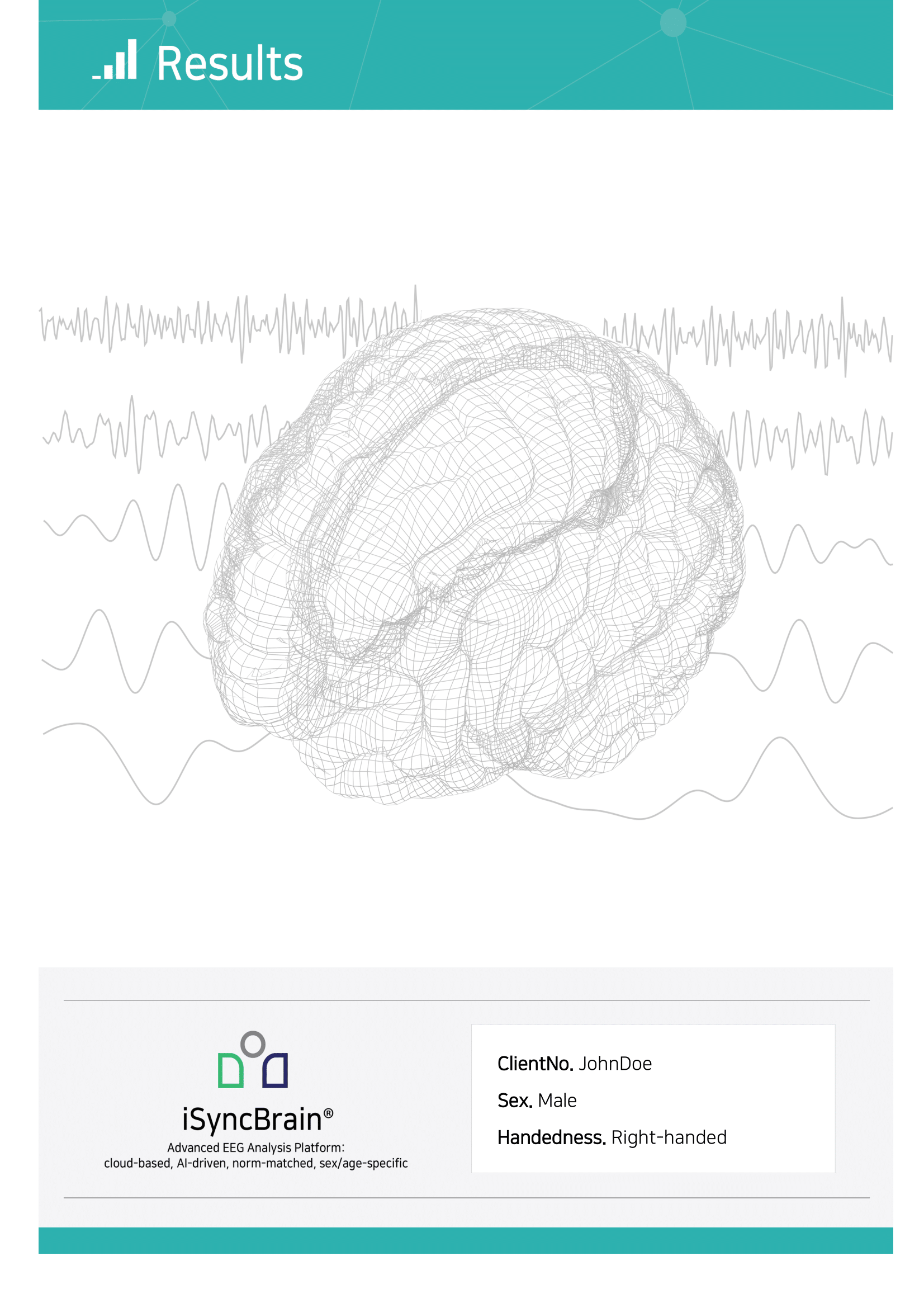
Basic subject info (age, sex, handedness) used for norm-matched comparisons throughout the report.

Table of Contents
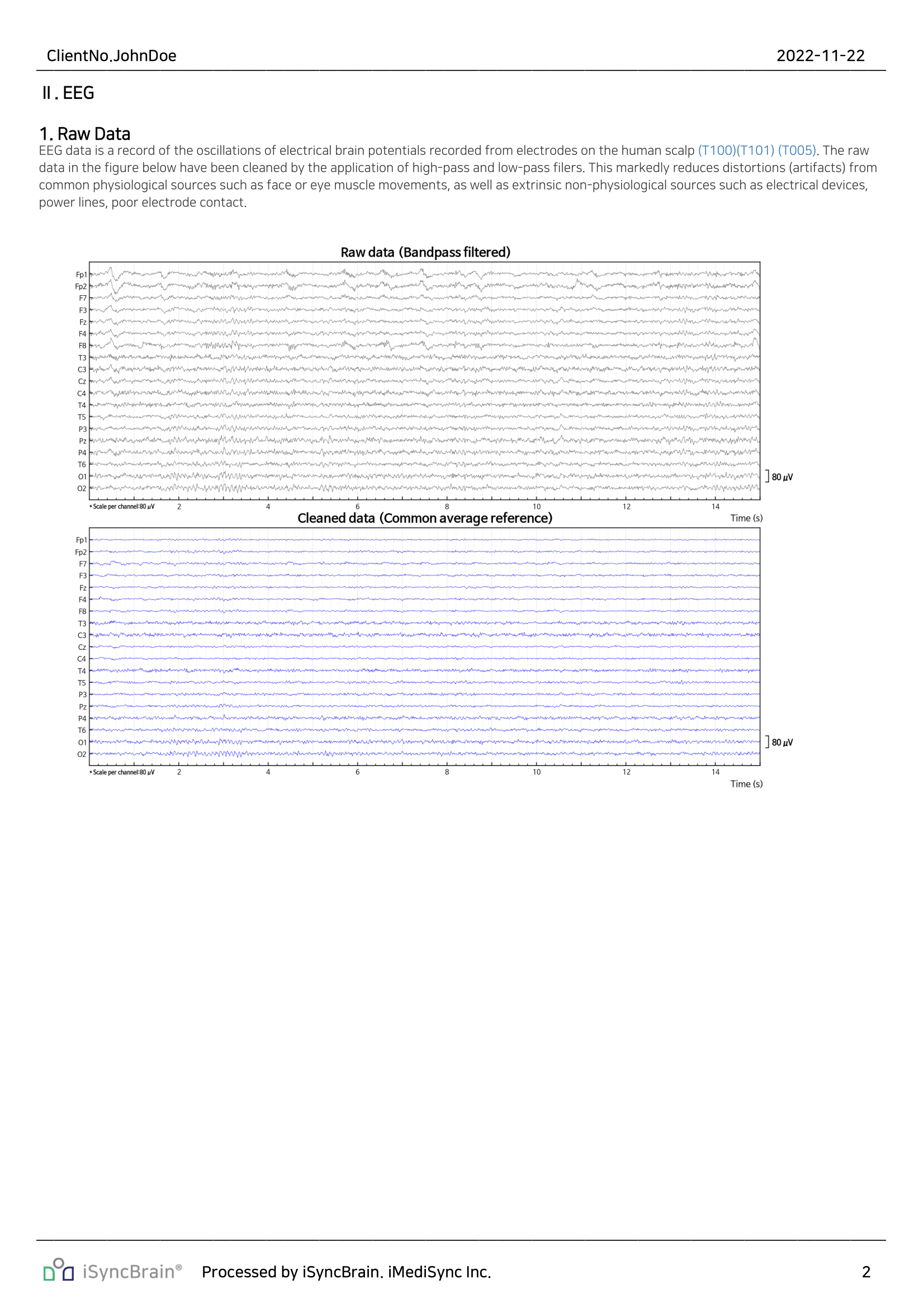
Raw Data Shows filtered EEG data, cleaned of noise, to visualize baseline electrical brain activity.

ICA Components Breaks EEG into independent signals to remove noise and isolate brain-based patterns.
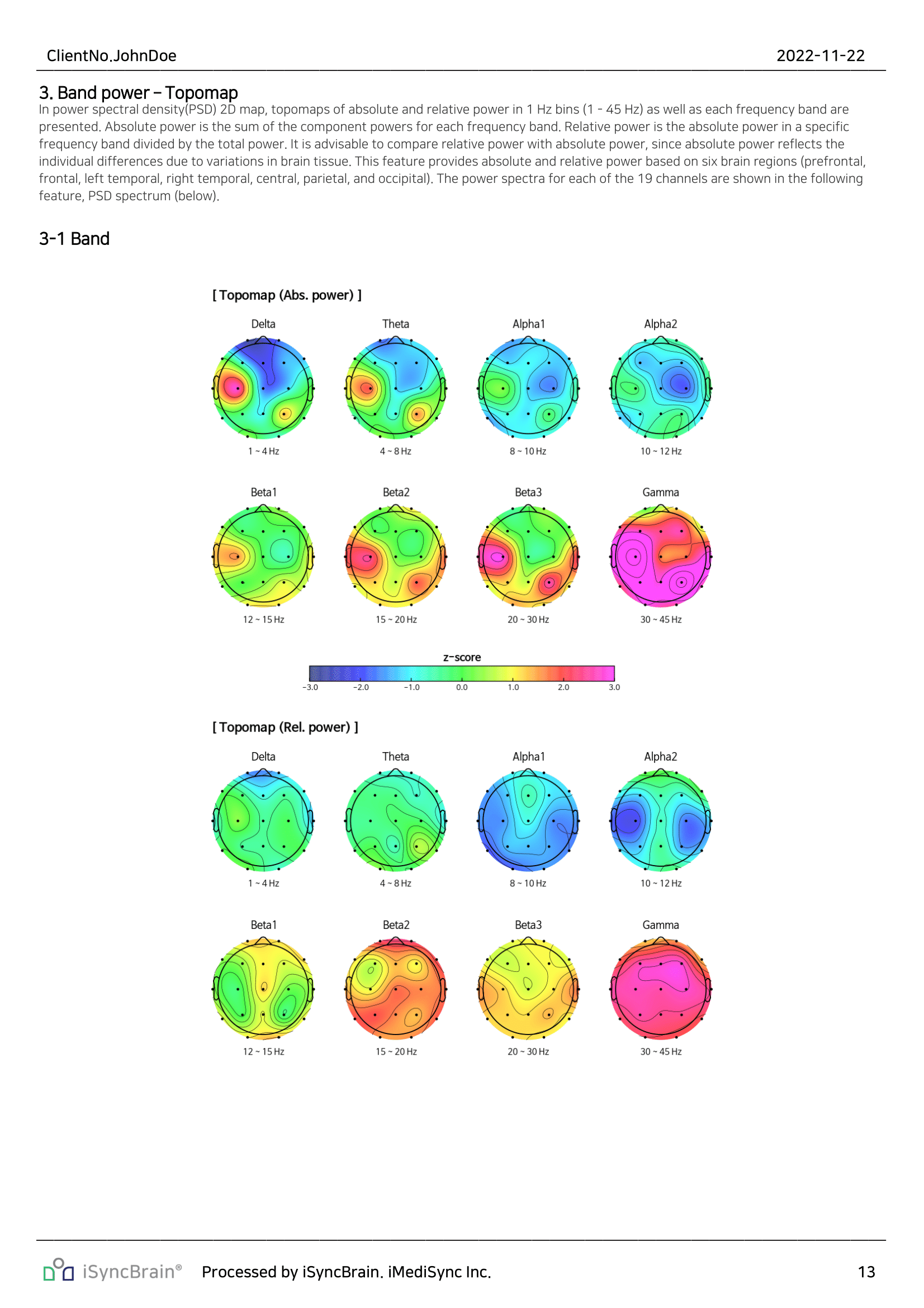
Band Power – Topomap Maps absolute and relative power across brain regions for delta to gamma bands.

Band Power – Topomap Maps absolute and relative power across brain regions in 1 Hz Bins

Power Spectrum Plots EEG signal strength by frequency. Highlights deviations from the normative EEG population.

Occipital Alpha Peak Measures peak alpha frequency in occipital areas—linked to cognition, memory, and aging.

Power Ratios Includes theta/beta, theta/alpha, and delta/alpha ratios—key markers for attention, cognition, and stroke recovery.
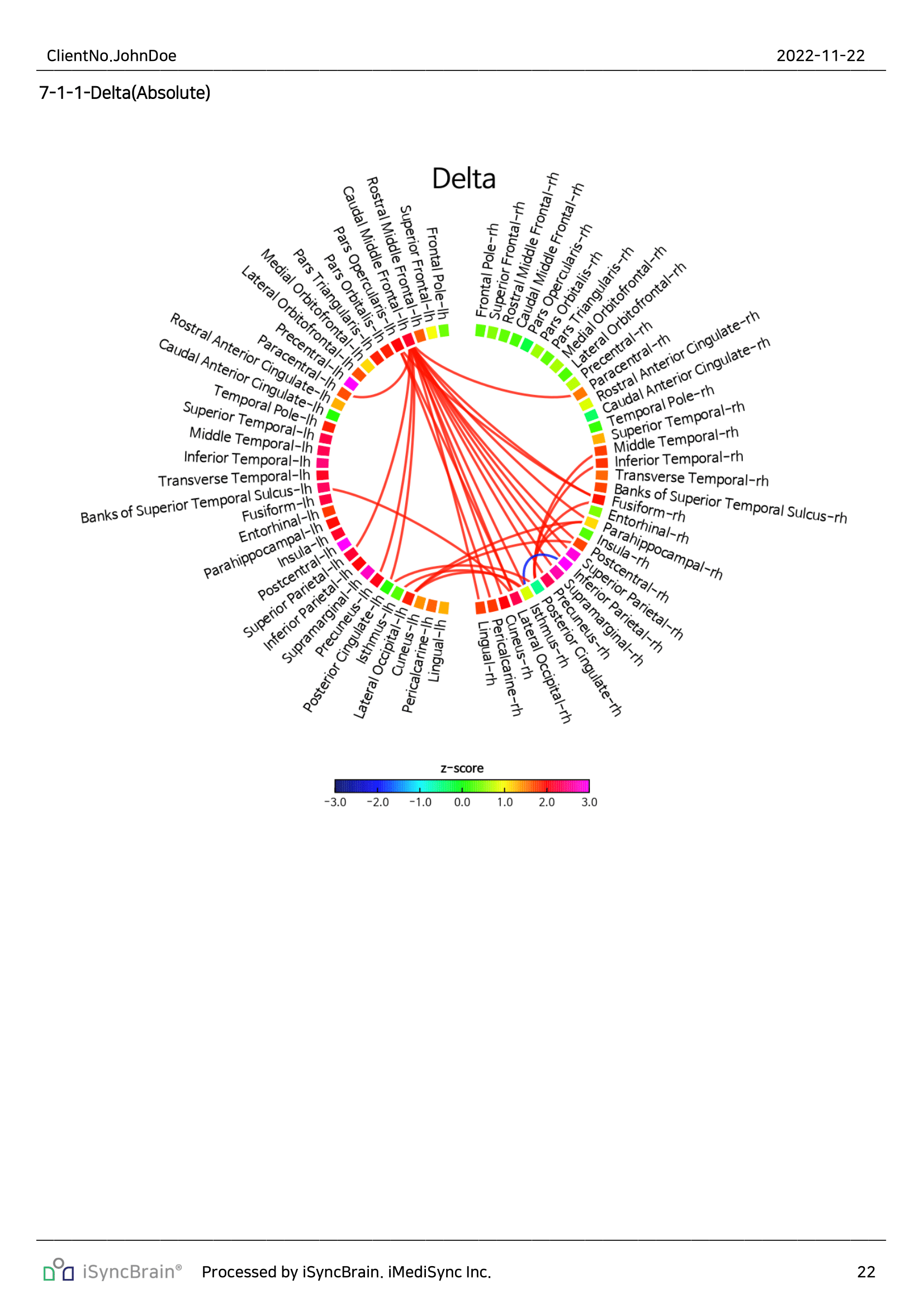
Source ROI Power & Connectivity Uses sLORETA and iCoh to show brain region activity and inter-regional functional connectivity.
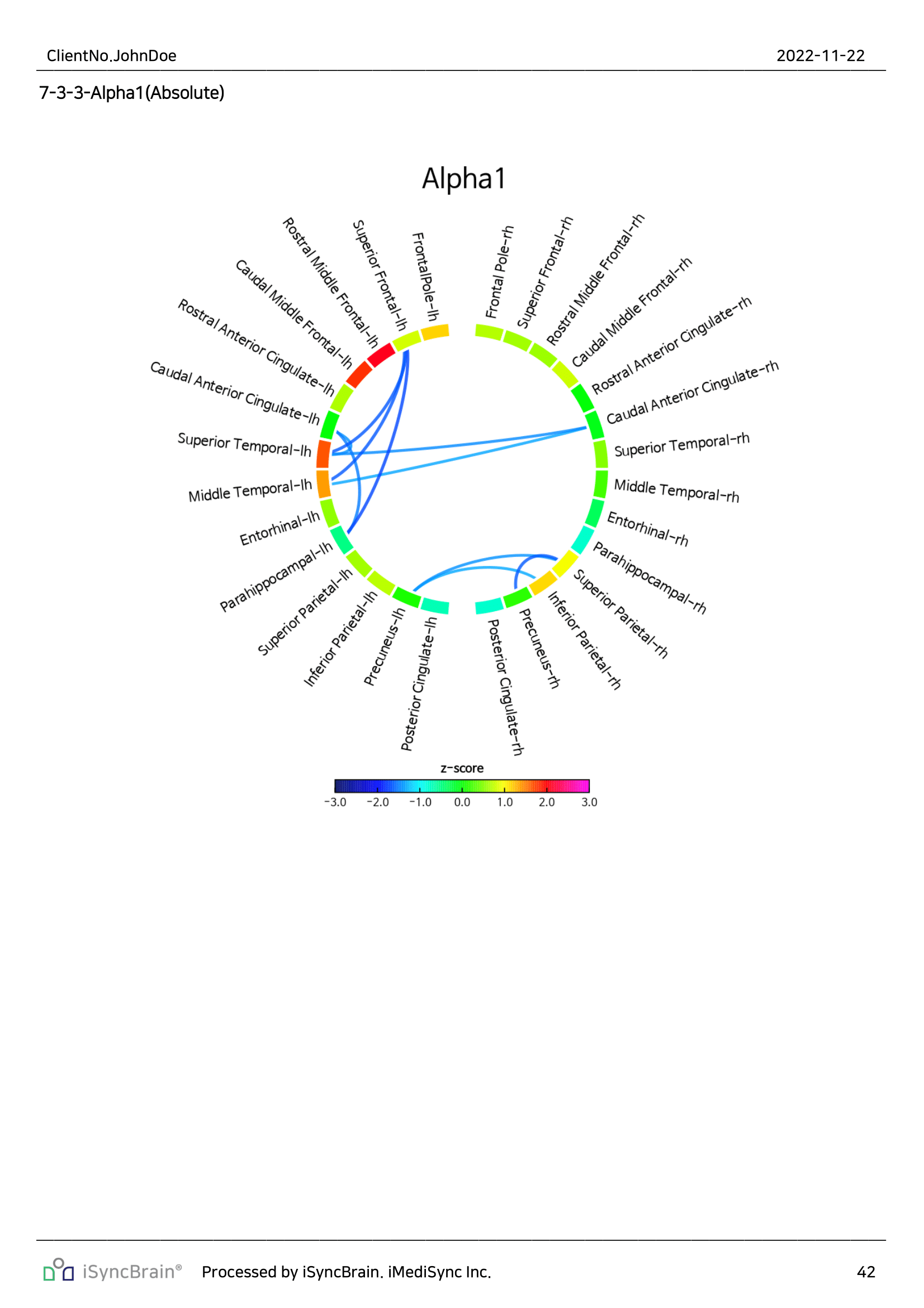
Source ROI Power & Connectivity Uses sLORETA and iCoh to show brain region activity and inter-regional functional connectivity specifically for the default mode network
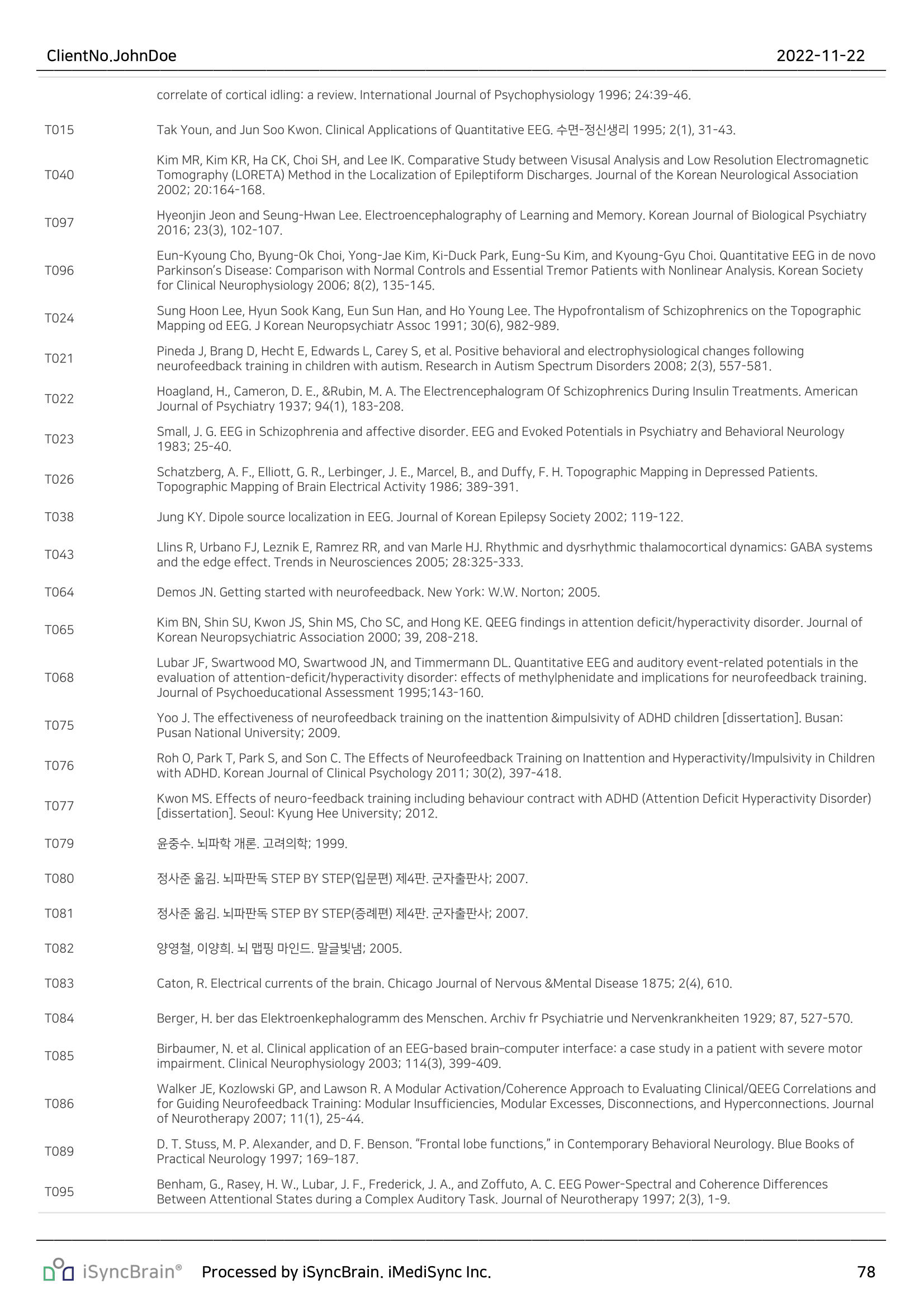
Lists scientific literature supporting each EEG biomarker and analytic method.
Individual qEEG Report
This individual EEG report provides a high-resolution view of brainwave activity without comparing to a normative database. It focuses on raw brain function, identifying signal patterns, power distributions, regional strengths, and connectivity. Ideal for tracking changes over time, this format is frequently used for research, personalized treatment, and protocol development.
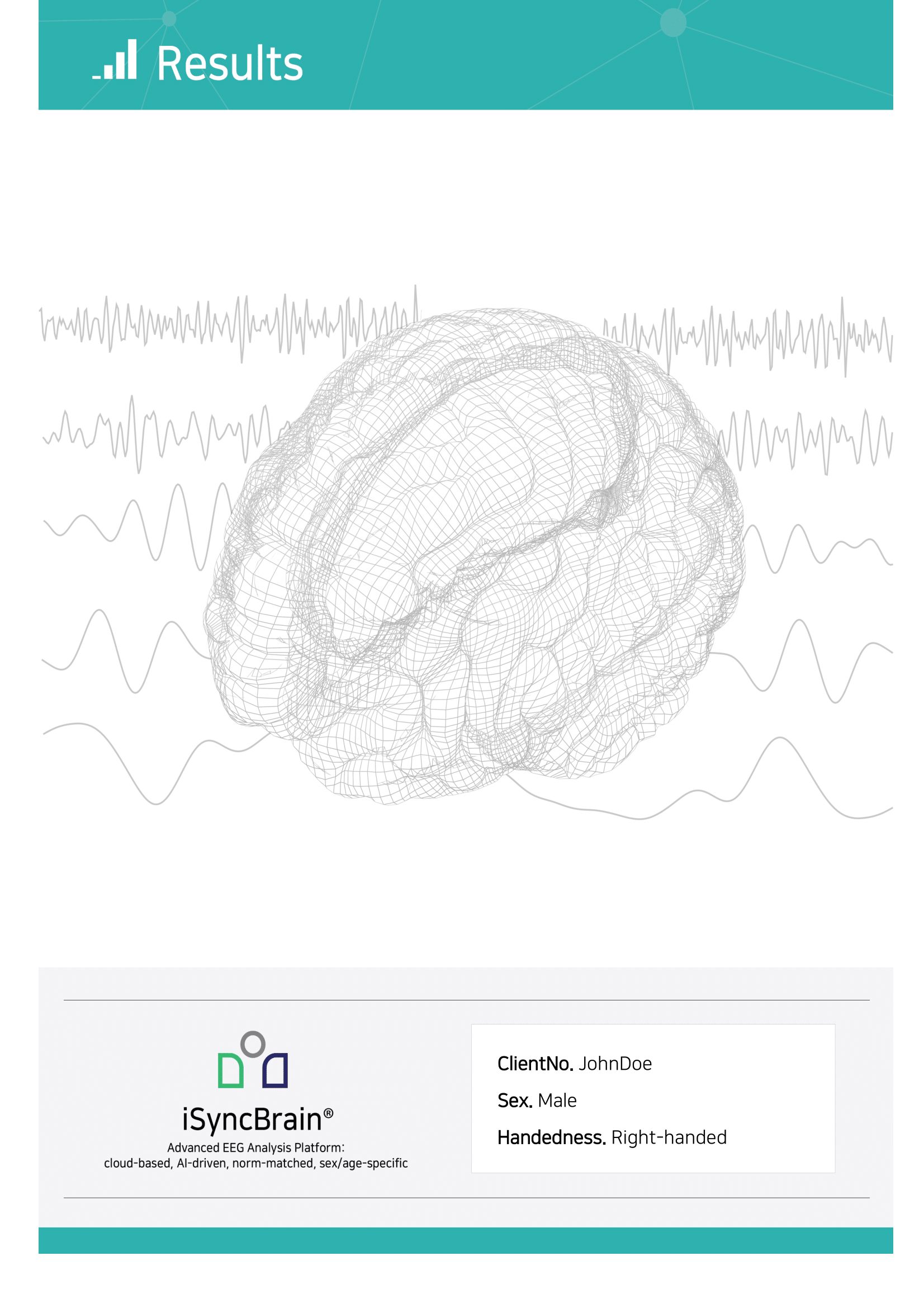
Basic subject info including age, handedness, and EEG session date for context.

Table of Contents

Raw Data Cleaned EEG waveforms from all channels, filtered to remove noise and artifacts using AI.

ICA Components Breaks down EEG into independent sources to isolate noise and underlying brain signals.

Band Power – Topomap Visual maps of absolute and relative power across brain regions in frequency band bins.
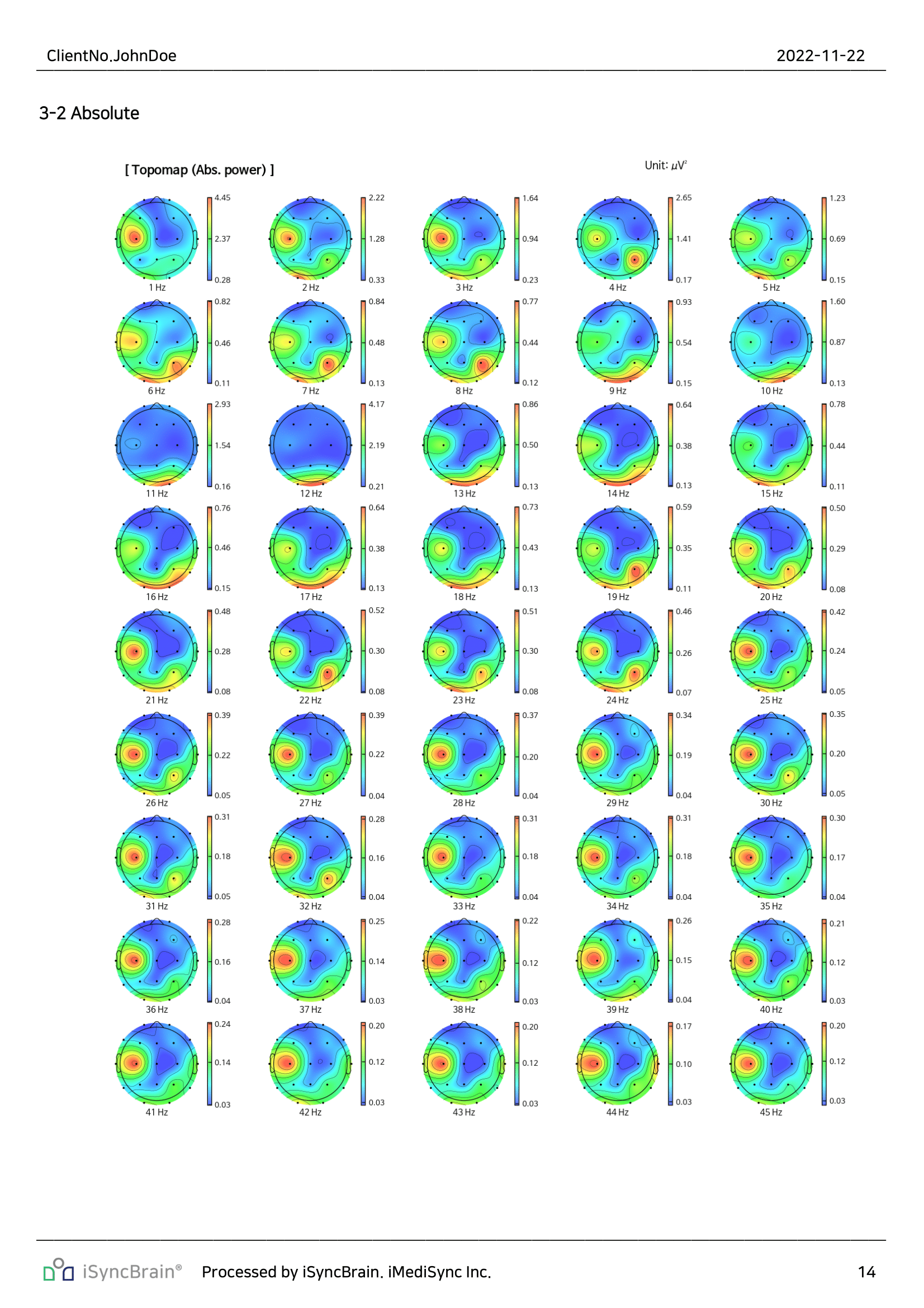
Band Power – Topomap Visual maps of absolute and relative power across brain regions in 1 Hz Bins

Power Spectrum Displays brainwave power across frequencies for each channel in multiple units.

Occipital Alpha Peak Shows the dominant alpha frequency in the visual cortex, tied to cognitive performance.

Power Ratios Provides theta/beta, theta/alpha, and delta/alpha ratios—important markers for cognition, attention, and recovery.
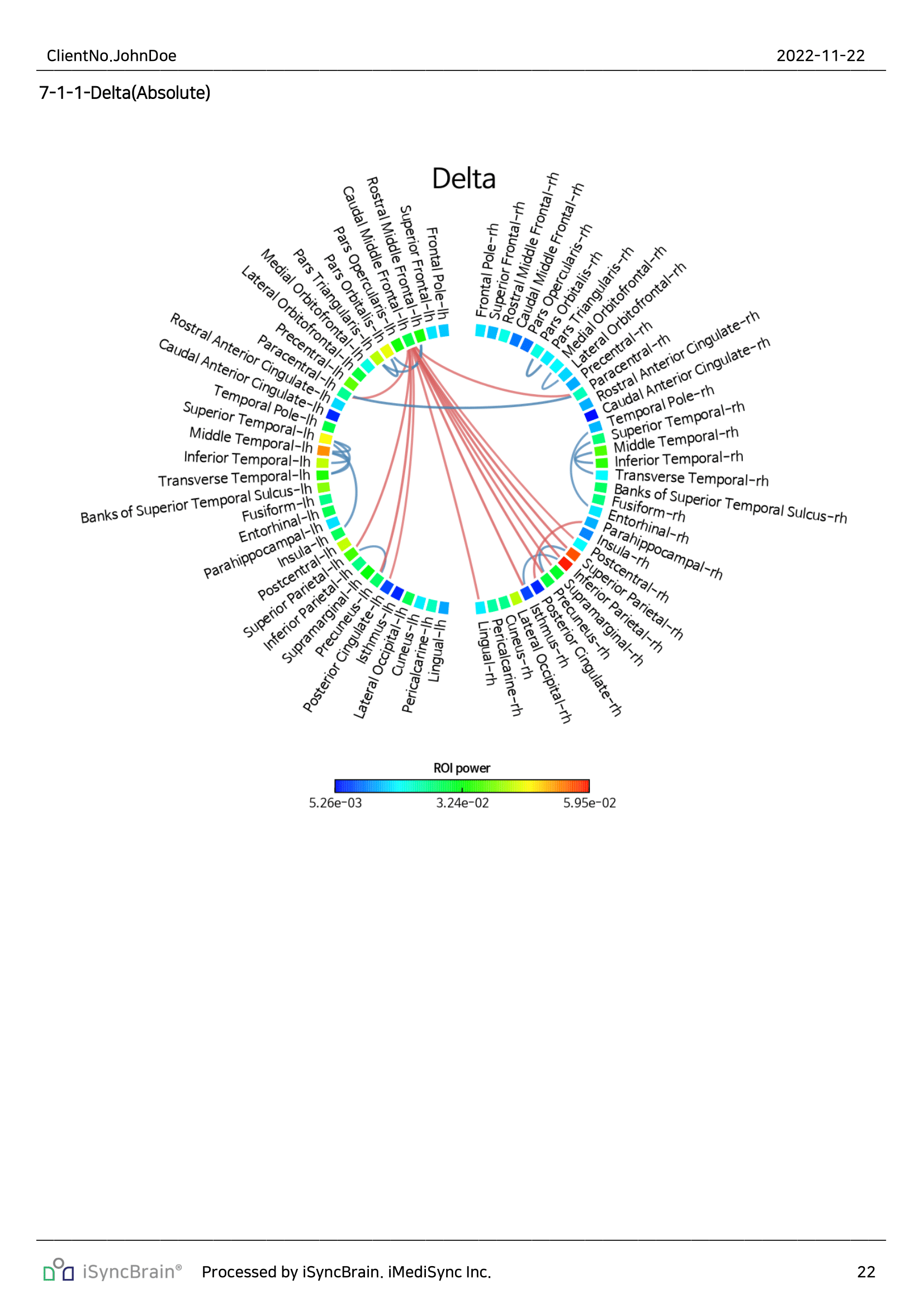
Source ROI Power & Connectivity sLORETA and iCoh display regional activation and functional brain connectivity without volume conduction bias.

Source ROI Power & Connectivity in the DMN sLORETA and iCoh display regional activation and functional brain connectivity in the DMN.
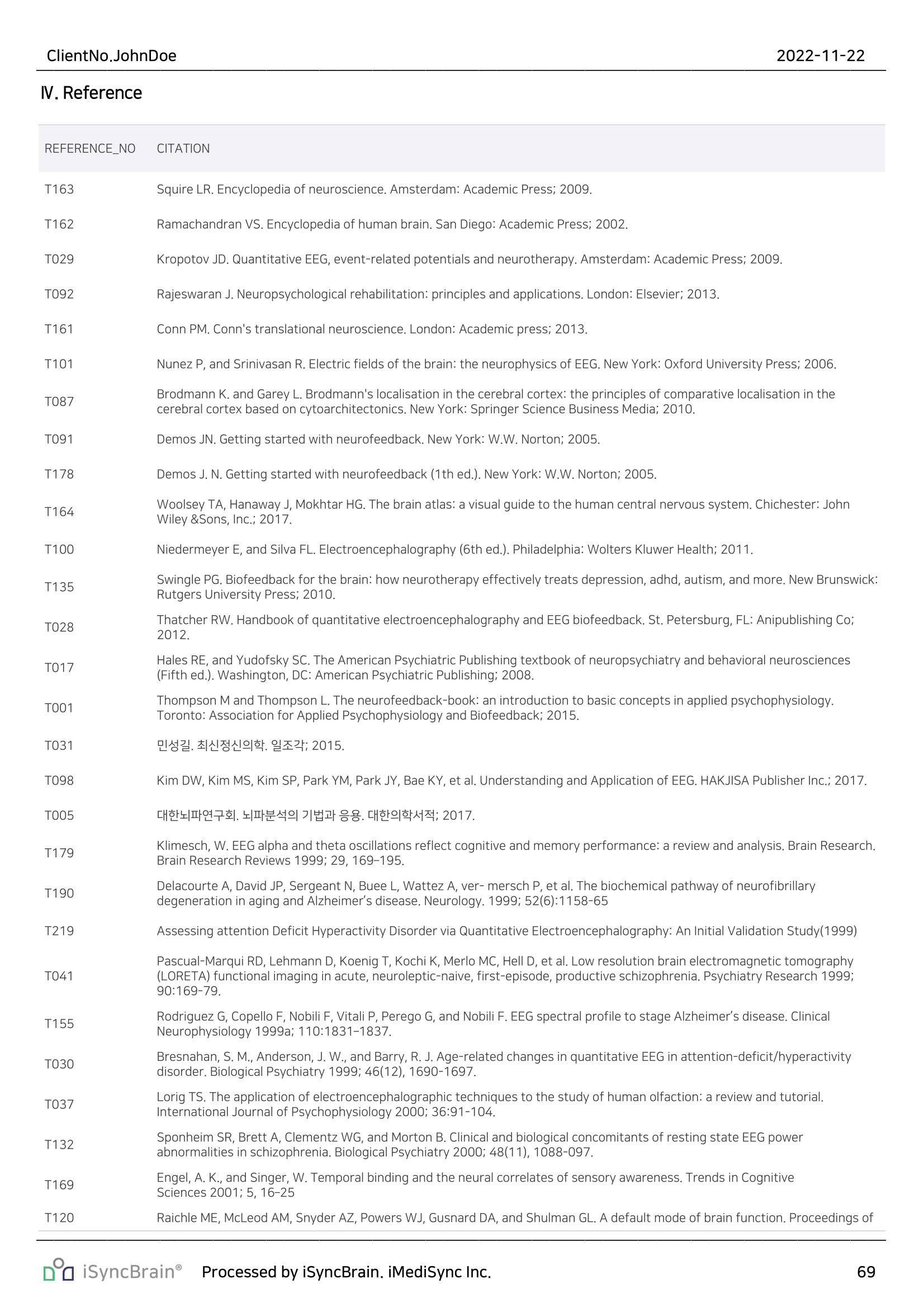
Full list of scientific sources supporting the EEG methods and biomarkers used.
Alzheimer’s Screening Report
The Alzheimer’s Screening Report is a non-invasive, EEG-based tool designed to detect early signs of amnestic Mild Cognitive Impairment (aMCI), a condition often preceding Alzheimer’s disease. This report utilizes quantitative EEG (qEEG) data and machine learning algorithms to identify patterns indicative of cognitive decline.

Displays MCI risk score (0–100%). Higher scores mean greater risk. Includes a threshold line to indicate if results suggest possible aMCI.
Pediatric Report
This pediatric EEG report evaluates brain development, processing speed, hemispheric balance, and cortical maturity using AI and normative comparisons. It identifies markers related to ADHD, ASD, and cognitive delay. Each metric highlights developmental strengths or concerns, offering clinicians and parents actionable insights to support early intervention and track neurological growth.
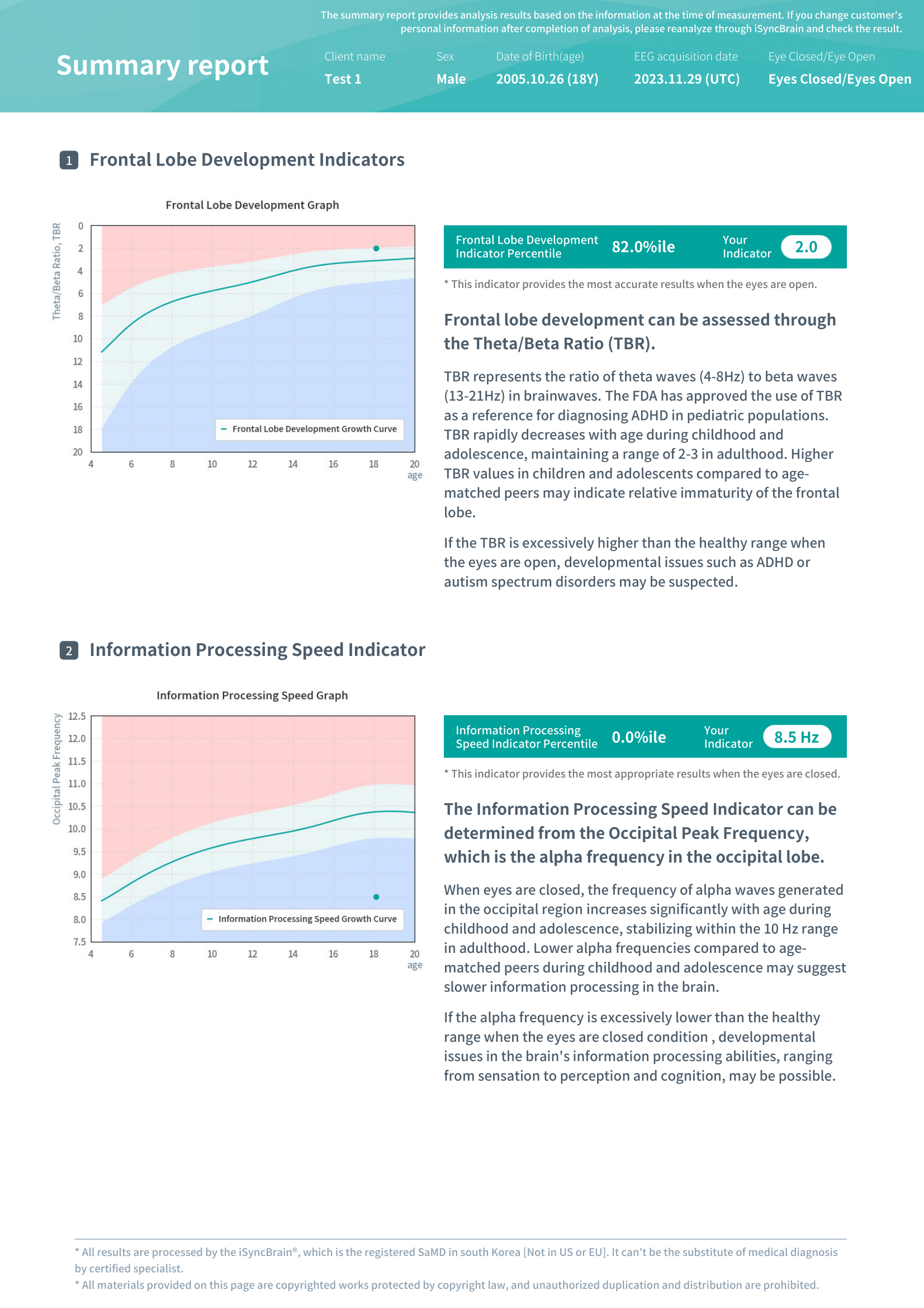
Assesses frontal lobe maturity (TBR, eyes open) and processing speed (occipital alpha, eyes closed). High TBR or low alpha may indicate ADHD, ASD, or delayed cognitive integration.

Compares alpha power eyes open vs. closed. Healthy brains show ~2× more alpha with eyes closed. Low reactivity suggests immature cognitive processing.

Analyzes hemispheric dominance and connectivity. Right dominance suggests emotional/spatial strengths; low or excessive connectivity may signal ADHD or ASD.
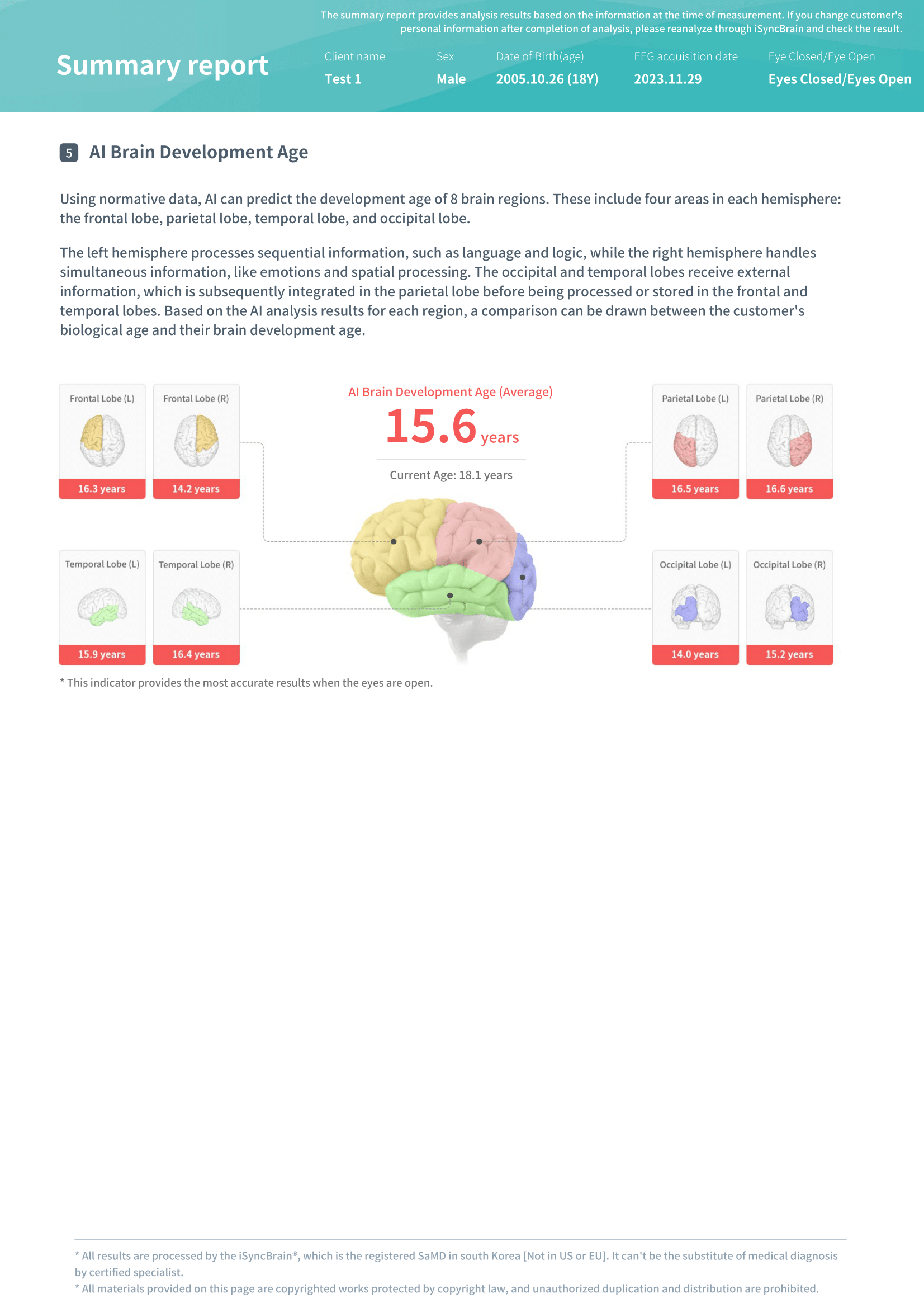
Estimates developmental age for eight brain regions. Compares EEG patterns to norms; younger brain age may indicate delayed cortical maturation.

Visualizes brain function using theta/beta ratios and standardized hemisphere scores. Includes a composite score and peer comparison to highlight global function..
Heart Rate Variability Report
This HRV report analyzes autonomic nervous system balance using heart rate variability (HRV) compared to age/sex norms. It evaluates stress resilience, cardiac adaptability, and mental state (depression, anxiety) using AI. Results guide lifestyle or clinical recommendations for improving heart performance, emotional balance, and nervous system regulation.

Shows PNS/SNS ratio (e.g., 48:52), HRV distribution compared to norms, and a histogram of adaptability. Indicates current heart resilience and nervous system balance.

Analyzes your stress level across five stages: homeostasis to burnout. Based on Hans Selye’s model and PPG rhythm patterns via AI.
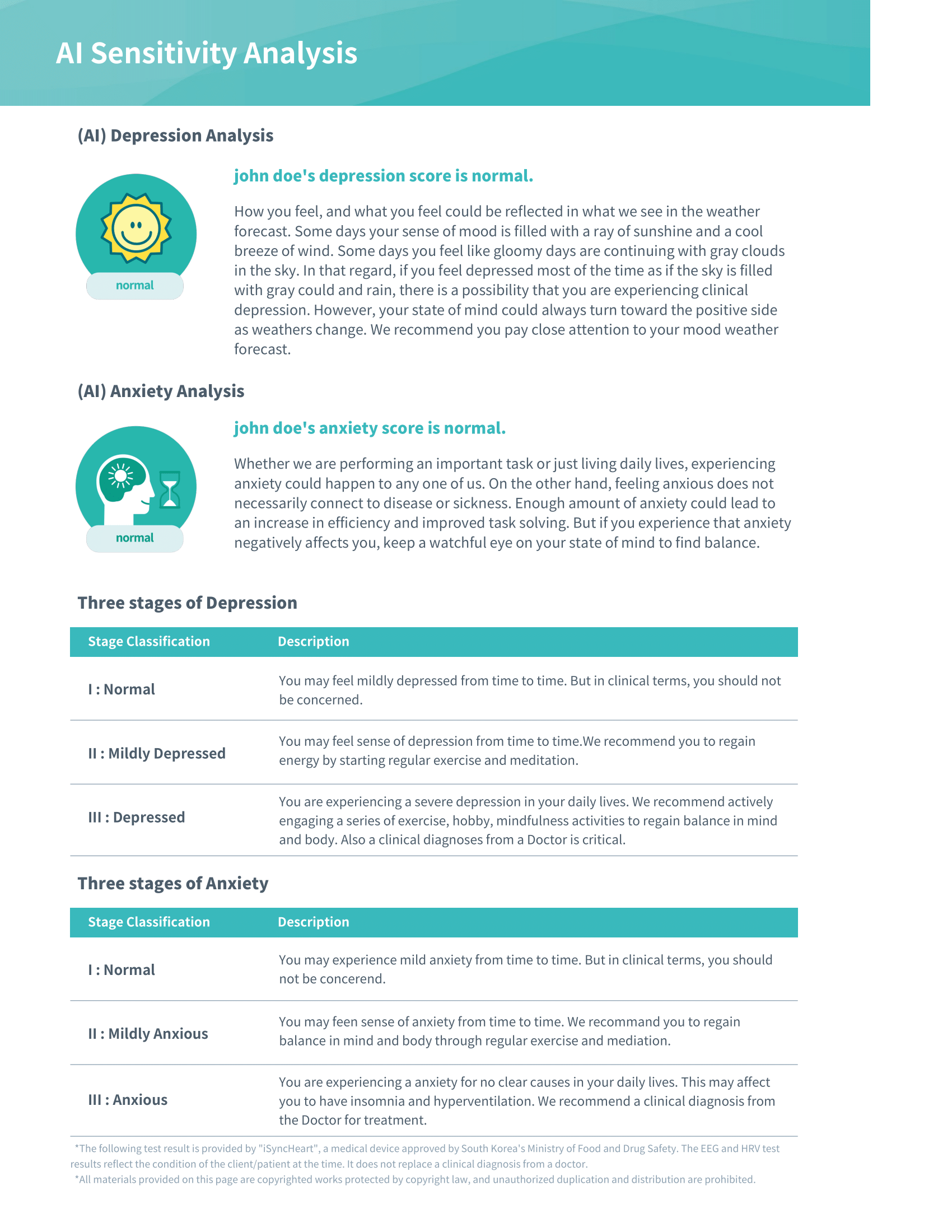
AI evaluates depression and anxiety levels. Results categorized as normal, mild, or clinical, with lifestyle and clinical recommendations for emotional balance.
